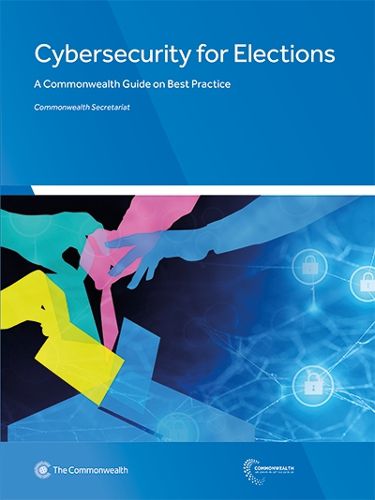Readings Newsletter
Become a Readings Member to make your shopping experience even easier.
Sign in or sign up for free!
You’re not far away from qualifying for FREE standard shipping within Australia
You’ve qualified for FREE standard shipping within Australia
The cart is loading…






Since the 1990s, Internet-connected devices have become an integral part of day-to-day life for many in the Commonwealth, including for election-related activities. However, during each phase of contemporary elections, the direct and indirect use of computers and other technology introduces a range of risks to electoral integrity.
This guide explains how cybersecurity issues can compromise traditional aspects of elections, such as verifying voters, counting and casting votes, and announcing results. It also explores how cybersecurity interacts with the broader electoral environment, including data management by candidates and parties, online campaigns, social media, false or divisive information, and e-voting. Unless carefully managed, all of these cybersecurity issues can present a critical threat to public confidence in election outcomes - the cornerstone of democracy.
To help Electoral Management Bodies (EMBs) manage cybersecurity risks, this guide describes principles for electoral cybersecurity as well as specific organisational recommendations that can be adapted as required. It additionally signposts an array of more detailed materials that can help with specific technical, social, or regulatory challenges.
$9.00 standard shipping within Australia
FREE standard shipping within Australia for orders over $100.00
Express & International shipping calculated at checkout
Since the 1990s, Internet-connected devices have become an integral part of day-to-day life for many in the Commonwealth, including for election-related activities. However, during each phase of contemporary elections, the direct and indirect use of computers and other technology introduces a range of risks to electoral integrity.
This guide explains how cybersecurity issues can compromise traditional aspects of elections, such as verifying voters, counting and casting votes, and announcing results. It also explores how cybersecurity interacts with the broader electoral environment, including data management by candidates and parties, online campaigns, social media, false or divisive information, and e-voting. Unless carefully managed, all of these cybersecurity issues can present a critical threat to public confidence in election outcomes - the cornerstone of democracy.
To help Electoral Management Bodies (EMBs) manage cybersecurity risks, this guide describes principles for electoral cybersecurity as well as specific organisational recommendations that can be adapted as required. It additionally signposts an array of more detailed materials that can help with specific technical, social, or regulatory challenges.